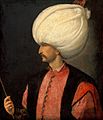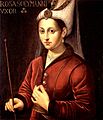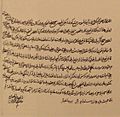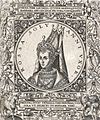Hurrem Sultan facts for kids
Quick facts for kids Hurrem Sultan |
|||||
|---|---|---|---|---|---|
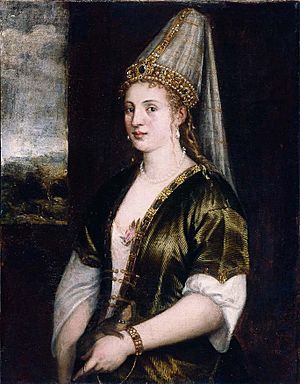
Portrait by Titian titled La Sultana Rossa, c. 1550
|
|||||
| Haseki Sultan of the Ottoman Empire (Imperial Consort) |
|||||
| Tenure | 1533/1534 – 15 April 1558 | ||||
| Successor | Nurbanu Sultan | ||||
| Born | Alexandra or Anastasia 1502–1506 Ruthenia, Kingdom of Poland (now Ukraine) |
||||
| Died | 15 April 1558 (aged 51–56) Topkapı Palace, Istanbul, Ottoman Empire (now Turkey) |
||||
| Burial | Süleymaniye Mosque, Istanbul | ||||
| Spouse | Suleiman the Magnificent | ||||
| Issue |
|
||||
|
|||||
| Father | ? Lisovsky | ||||
| Religion | Sunni Islam, previously Eastern Orthodox Christian | ||||
Hurrem Sultan ( Ottoman Turkish: حرم سلطان, romanized: Ḫurrem Sulṭān, Modern Turkish: Hürrem Sultan; c. 1502 – 15 April 1558), also known as Roxelana (Ukrainian: Роксолана; lit. the Ruthenian one), was the chief consort and wife of the Ottoman sultan Suleiman the Magnificent. She became one of the most powerful and influential women in Ottoman history as well as a prominent and controversial figure during the era known as the Sultanate of Women.
Born in Ruthenia (then an eastern region of the Kingdom of Poland, now Ukraine), Hurrem was captured by Crimean Tatars during a slave raid and eventually taken to Istanbul, the Ottoman capital. She entered the Imperial Harem, rose through the ranks and became the favourite of Sultan Suleiman. Breaking Ottoman tradition he married Hurrem, making her his legal wife; sultans had previously married only foreign free noble ladies. She was the first imperial consort to receive the title Haseki Sultan. Hurrem remained in the sultan's court for the rest of her life, having six children with him, including the future sultan, Selim II. She was the grandmother of Murad III.
Hurrem eventually achieved power, influencing the politics of the Ottoman Empire. Through her husband, she played an active role in affairs of the state. She probably acted as the sultan's advisor, wrote diplomatic letters to King Sigismund II Augustus of Poland (r. 1548 – 1572) and patronized major public works (including the Haseki Sultan Complex and the Hurrem Sultan Bathhouse). She died in 1558, in Istanbul and was buried in a mausoleum within the Süleymaniye Mosque complex.
Images for kids
-
Statue of Roxolana (Nastia Lisovska) in Rohatyn, Ukraine
-
16th century Latin oil painting of Hurrem Sultan titled Rosa Solymanni Vxor (Rosa, Süleyman's Wife)
-
Letter of Hurrem Sultan to Sigismund II Augustus, congratulating him on his accession to the Polish throne in 1549.
-
Haseki Sultan Complex designed by the architect Mimar Sinan.
-
The türbe (mausoleum) of Hurrem Sultan at Süleymaniye Mosque in Fatih, Istanbul.
-
The son of Hurrem Sultan and Suleiman the Magnificent, Selim II
-
A painting of Hurrem Sultan by a follower of Titian, 16th century
-
Roxelana and Süleyman the Magnificent by the German baroque painter Anton Hickel, (1780)
See also
 In Spanish: Roxelana para niños
In Spanish: Roxelana para niños


